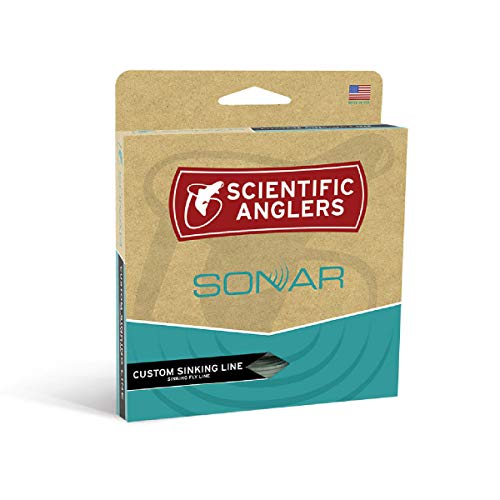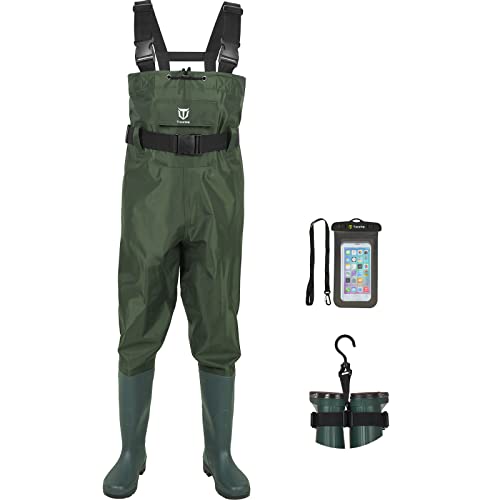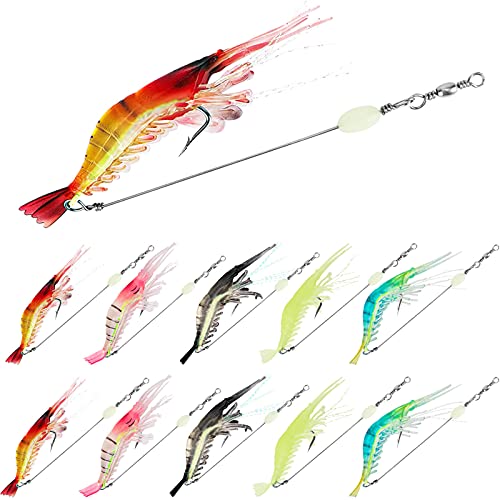To rig a surf fishing rod, attach a leader line, tie on a hook, and add bait or lures. Surf fishing is a popular method of fishing from the shoreline, often targeting species like striped bass, redfish, and pompano.
Rigging your surf fishing rod correctly is essential for a successful day on the beach. The basic rig setup involves attaching a leader line to your main line, tying on a suitable hook, and adding bait or lures to attract the fish.
This simple and effective rig will give you the best chance of landing your desired catch. We will discuss the step-by-step process of rigging a surf fishing rod, as well as some additional tips and techniques to enhance your fishing experience.

Credit: stflyfisher.wordpress.com
Understanding The Basics Of Surf Fishing Rod Rigging
Surf fishing is an exhilarating sport that requires the right equipment for success. One of the most fundamental aspects of surf fishing is properly rigging your fishing rod. Ensuring that your surf fishing rod is rigged correctly can make a significant difference in your chances of landing a big catch.
In this section, we will explore the key elements of surf fishing rod rigging, including choosing the right surf fishing rod, selecting the ideal fishing line, and essential terminal tackle for surf fishing.
Choosing The Right Surf Fishing Rod:
When it comes to surf fishing rods, selecting the right one can greatly impact your overall fishing experience. Here are some key points to consider:
- Length: Opt for a longer rod, typically between 9 to 12 feet, to allow for longer casting distances in the surf.
- Power and action: Choose a rod with enough power to handle the weight of the fish you expect to catch and the ability to cast lures or bait. Select the action (fast, medium, or slow) depending on the casting technique you prefer.
- Material: Graphite or composite rods are popular choices due to their durability and sensitivity.
- Budget: Determine your budget and find a surf fishing rod that offers good quality within that range.
Selecting The Ideal Fishing Line:
Picking the right fishing line is crucial for successful surf fishing. Consider the following points when choosing your fishing line:
- Line strength: Opt for a line with higher pound test to withstand the strong currents and potential fight from larger fish species.
- Line type: Monofilament lines are popular for their versatility, affordability, and good knot strength. Alternatively, braided lines offer excellent strength and sensitivity.
- Abrasion resistance: Surf fishing often involves casting in rocky areas, so choose a line with high abrasion resistance to prevent breakoffs.
- Line color: Consider using a line color that contrasts with the water for better visibility and to detect subtle bites.
Essential Terminal Tackle For Surf Fishing:
To effectively rig your surf fishing rod, you’ll need the right terminal tackle. Here are some essential items to include in your tackle box:
- Hooks: Carry a variety of hook sizes based on the target fish species and the bait you intend to use.
- Sinkers: Different weights of sinkers will help you adjust to various surf conditions and casting distances.
- Swivels: Use high-quality swivels to prevent line twist caused by strong currents or bait movement.
- Rigs: Carolina rigs, fishfinder rigs, and double-drop rigs are popular choices for surf fishing. Experiment with different rig setups to find what works best for you.
- Bait and lures: Stock up on a variety of live bait, such as sand fleas or shrimp, as well as artificial lures that imitate local baitfish.
With these basics of surf fishing rod rigging in mind, you can venture out to the beach with confidence, knowing that your setup is optimized for success. Remember to stay adaptable and make adjustments as needed during your fishing session.
So, grab your rod, tackle, and hit the surf for an exciting day of fishing!
Step-By-Step Guide To Rigging Your Surf Fishing Rod
Surf fishing can be an exhilarating experience, but it’s essential to have the right setup and know-how to rig your surf fishing rod properly. In this step-by-step guide, we’ll walk you through the process of rigging your surf fishing rod so you can maximize your chances of success on the water.
Preparing The Fishing Line
Before you can rig your surf fishing rod, you need to make sure your fishing line is properly prepared. Here are the key steps to follow:
- Start by attaching the fishing line to the reel using a strong knot, such as the arbor knot or the improved clinch knot.
- Once the line is secured, fill up the reel until it’s nearly full, leaving a small gap to prevent line tangles.
- Make sure the line is properly spooled onto the reel, ensuring that there are no twists or loops that could cause issues during casting.
- Check the line for any knots or abrasions that could weaken its strength. If you spot any, it’s best to replace the line to avoid potential breakage during a catch.
Attaching The Swivel And Leader Line
To ensure your rig is effective, it’s crucial to attach a swivel and leader line. Follow these steps to do it correctly:
- Start by cutting a length of leader line, typically around 2 to 3 feet long, depending on your preference and fishing conditions.
- Attach one end of the leader line to the main line using a swivel. The swivel will prevent the line from twisting and tangling while you cast and retrieve your rig.
- Use a strong knot, such as the palomar knot, to secure the swivel to the main line.
- On the other end of the leader line, attach your fishing hook using a suitable knot, ensuring it’s tightly secured.
Adding Weight To The Rig
Adding weight to your rig is crucial to help it sink in the water and stay in place. Follow these steps to ensure your rig is properly weighted:
- Select an appropriate sinker weight based on your fishing conditions and the type of bait you’ll be using.
- Slide the sinker onto the main line above the swivel, ensuring it’s securely attached.
- Some anglers prefer using a dropper loop knot above the sinker to allow for adjustable weight placement on the rig.
- If you’re fishing in areas with strong currents, you may need to use additional weights to keep your rig anchored in place.
Tying The Bait Or Lure Onto The Hook
Once your rig is properly weighted, it’s time to attach your bait or lure to the hook. Follow these steps to do it correctly:
- Select the appropriate bait or lure based on the type of fish you’re targeting and the fishing conditions.
- With fresh bait, thread the hook through the bait once or twice, ensuring it’s securely attached.
- If you’re using artificial lures, make sure they’re properly attached to the hook, following the manufacturer’s instructions.
- Check that the bait or lure is securely fastened to the hook, as a loose connection could result in lost catches.
Properly Casting And Retrieving Your Rig
Having a perfectly rigged surf fishing rod won’t achieve results if you don’t know how to cast and retrieve your rig correctly. Here are some tips to ensure proper technique:
- Before casting, make sure you have ample space behind you and that no obstacles or people are in your way.
- Hold the rod with a firm grip and extend your arm back while keeping your wrist straight.
- With a smooth and controlled movement, bring the rod forward, releasing the line at the right moment for your desired casting distance.
- To retrieve your rig, start reeling in slowly and steadily, using a variety of speeds and pauses to mimic the movement of prey and attract fish.
- Pay attention to any bites or nibbles and adjust your retrieval speed or technique accordingly to entice the fish to strike.
Now that you know the step-by-step process of rigging your surf fishing rod, you’re ready to hit the beach and try your luck. Remember to respect local fishing regulations, practice catch and release whenever possible, and enjoy the thrill of surf fishing!
Expert Tips And Tricks For Successful Surf Fishing Rod Rigging
Surf fishing is an exhilarating and rewarding angling experience, but it requires skillful rigging to increase your chances of success. Whether you’re a novice or a seasoned angler, these expert tips and tricks will help you rig your surf fishing rod effectively and optimize your results.
Adjusting Rigging Based On Current And Tide Conditions
When it comes to surf fishing, understanding the current and tide conditions is crucial in determining the right rigging setup. Consider the following key points:
- Sinkers: Use heavier sinkers in strong currents to prevent your bait from unnaturally drifting, and lighter sinkers in weaker currents to maintain natural movement.
- Leader length: Lengthen your leader when the tide is high and the water is murky, allowing your bait to be more visible to fish. Shorten the leader when the tide is low and the water is clear to avoid it getting caught on the bottom.
- Adjusting hooks: Use larger hooks in rough surf conditions. This allows your bait to remain securely attached and increases your chances of hooking larger fish.
Using Different Bait And Lure Types For Maximum Effectiveness
Experimenting with various bait and lure types is essential in surf fishing. Here are some points to consider:
- Live bait: Use live bait such as sand fleas, shrimp, or small crabs, which are attractive to a variety of fish species.
- Cut bait: Prepare cut bait from fresh fish like mullet or mackerel to release a powerful scent that attracts predatory fish.
- Artificial lures: Utilize lures like spoons, jigs, or soft plastics, mimicking the movement of baitfish to entice the fish to strike.
Remember, different species of fish have different preferences, so adjust your bait or lure accordingly.
Techniques For Avoiding Snags And Tangles
Snags and tangles can frustrate any angler, but with these techniques, you can minimize the chances of encountering such obstacles:
- Line management: Regularly check your line for tangles and loops, and re-spool it if needed. This ensures smooth and reliable casting.
- Using shock leader: Attach a shock leader to your main fishing line, designed to absorb the shock of a sudden fish strike and prevent it from breaking.
- Casting technique: Practice your casting technique to minimize line twists and prevent your rig from getting tangled.
By adopting these techniques, you can focus more on catching fish and less on dealing with snags and tangles.
Reading The Surf And Positioning Your Rig For Optimal Results
To optimize your chances of success, it’s important to read the surf and position your rig strategically. Consider these key points:
- Finding sandbars: Identify sandbars and troughs where fish tend to congregate. Cast your rig just beyond the breakers to target these areas.
- Being aware of wave action: Pay attention to the rhythm of the waves. Cast your rig during the lull between sets to avoid having it knocked back to shore.
- Moving your rig: If you’re not getting any bites, don’t hesitate to reposition your rig. Experiment with different distances and angles until you find the sweet spot.
Remember, surf fishing is a dynamic sport, and adapting to the ever-changing conditions will greatly increase your chances of catching fish.
Safety Considerations And Best Practices For Surf Fishing
Alongside the excitement of surf fishing, it’s important to prioritize safety. Keep these best practices in mind:
- Mind the waves: Be cautious of large waves and rogue waves. Always maintain a safe distance from the water’s edge.
- Use protective gear: Wear appropriate footwear to protect your feet from sharp objects like shells or rocks. Additionally, consider using sunscreen and a hat to shield yourself from the sun.
- Be familiar with local regulations: Research and comply with local fishing regulations, including size and bag limits for specific species, to fish responsibly and sustainably.
By prioritizing safety, you can enjoy a memorable surf fishing experience while minimizing potential risks.
Remember, becoming proficient in surf fishing rod rigging takes practice and patience. By using these expert tips and tricks, adjusting your rig according to conditions, using various bait and lure types, avoiding snags and tangles, reading the surf, and prioritizing safety, you’ll be well on your way to a successful surf fishing adventure.
Happy fishing!
Conclusion
Mastering the art of rigging a surf fishing rod is crucial for any angler looking to take their fishing game to the next level. By following the step-by-step guide provided in this blog post, you will have the knowledge and skills to assemble your rig with ease and efficiency.
Remember to choose the right bait and hooks for your target fish species, and pay attention to the details when setting up your leader and sinker. Additionally, make sure to regularly check and maintain your rig to ensure optimal performance.
With practice and experience, you will develop your own techniques and preferences that suit your fishing style. So go out there, rig up your surf fishing rod, and enjoy a day of successful and rewarding fishing on the beach!






